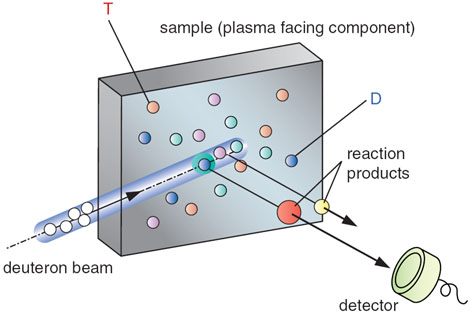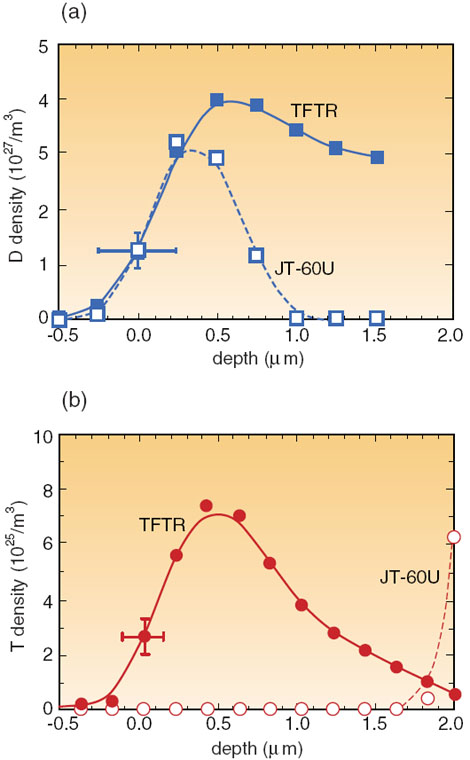Deuterium (D) and tritium(T) used as fusion reactor fuel accumulate inside the vacuum vessel (plasma facing components) of fusion devices. The accumulation induces undesirable effects for plasma controls, T safety, etc. Thus, the amounts of these hydrogen (H) isotopes must be estimated to understand their behavior in plasma facing components (PFC). Depth profiles of H isotopes in PFCs of the experimental facilities "JT-60U and the TFTR (Princeton Plasma Physics Laboratory)" were measured by deuteron-induced nuclear reaction analysis, which allows absolute measurements of atomic densities in matter (Fig. 2-7) [1].
As is shown in Fig. 2-8 (a) and (b), both D and T depth profiles of the TFTR sample were different from that of the JT-60U sample. The H isotopes were distributed over a deeper region in the profiles of the TFTR sample because of the co-deposition of H isotopes with eroded carbon particles that resulted from TFTR operations of plasmas in contact with an inner bumper limiter made of carbon-based materials. In the D-D plasmas used in JT-60U, T is produced only by D(d,t)H reactions. Since such T penetrates more deeply in a PFC due to its kinematic energy, T was not distributed in the surface region [2].
Although the H isotope depth profile of some PFCs has been obtained in the present analysis, we expect additional important information will be obtained to reveal the H isotope behavior by continued systematic PFC analysis. |

